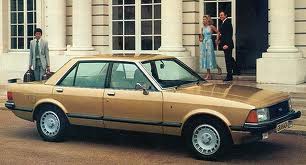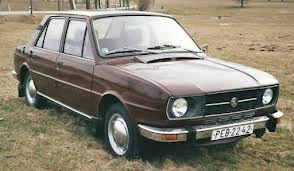


This edition of the Aston-Martin Atom 2.0L is the 4 speed / Semi-Auto version and was first brought out in 1939. This was at around the same time as the introduction of the 1939 Lagonda V12 LeMans 4.5L V8 and the This particular Aston-Martin Atom has a 1970cc Naturally Aspirated Petrol powerplant with 4 cylinders in a St formation.
The Atom shares its Petrol St4 engine configuration with the likes of the 2019 Ariel Atom 4 2.0 Turbo and the 2013 Caterham 7 620 R 2.0 L Supercharged. If you're looking for other fast cars which share the Atom's Rear Wheel Drive, Coupe combination then how about the 1982 Fiat X1/9 1.5 8V or the 1965 Aston-Martin DB6 1965.
Weighing in at 1220 kgs (2689 lbs) this makes the Aston-Martin Atom 2.0L in the same weight category as the 2020 Audi A1 Sportback 40 TFSI S tronic S line or the give or take 50kg.
In terms of power the 1970cc 8V St4 engine produces 82 bhp (61 kW) @ 5000 rpm similar to the 2013 Caterham 7 160/165 0.7L Turbo (79 bhp) or the 2012 Lexus CT 200h 1.8L (98 bhp).
The Naturally Aspirated St4 throws out 85 lb-ft (115.2 Nm) @ 4500 rpm placing it with cars of similar torque performance figures such as the 2013 Caterham 7 160/165 0.7L Turbo (79 lb-ft) or the 2012 Lexus CT 200h 1.8L (105 lb-ft).
If one combines the weight with power or torque performance for the Aston-Martin Atom you can get a better idea of it's real world performance.
![Austin-Healey 100 SIX BN4 - [1956] image Austin-Healey 100 SIX BN4 - [1956] image](/editionimages/807.jpg)
The 1956 Austin-Healey 100 SIX BN4 (91.5 bhp per ton) has similar Bhp Per Ton stats as the Aston-Martin Atom.
The Aston-Martin Atom has a Power to weight ratio of 67.2 bhp per ton and 69.6 lb-ft per ton. Bhp Per Ton figures of the 1939 Atom competing with the 1956 Austin-Healey 100 SIX BN4 (91.5 bhp per ton) or the 1992 Rolls-Royce Silver Spirit II 6.8 V8 (91.4 bhp per ton).
If you agree with the late great Carroll Shelby then arguably an even better indicator of potential performance, Torque. Use weight as well and you end up with - Torque per ton, with the Aston-Martin Atom generating around 69.6 lb-ft per ton. If you're curious as to what other cars have as much torque to weight then look no further than the 1993 Rover 200 216 GTi Coupe (94.4 lb-ft per ton) or the 1978 Ford Mustang 2 Cobra 140 2.3 (94.4 lb-ft per ton).
With a 0-60mph time of 19.00 secs or a 0-100km/h (0-62mph) of 19.6 secs, this made the Aston-Martin Atom 2.0L as fast as the 1953 Ford F-100 4.5 V8 (20.00 secs) the 1996 Hummer H1 6.5 V8 2 Door (20.10 secs) the 1950 Ford Zephyr 2.2 12v (21.10 secs) the or the 1992 Hummer H1 6.2 V8 4 Door (21.80 secs). This Aston-Martin Atom 2.0L is also faster than the 1953 Ford F-100 4.5 V8 (20.00 secs) the 1996 Hummer H1 6.5 V8 2 Door (20.10 secs) the 1950 Ford Zephyr 2.2 12v (21.10 secs) the and the 1992 Hummer H1 6.2 V8 4 Door (21.80 secs).
When talking about the performance of the Aston-Martin Atom on the drag strip it can reach a quarter mile in an estimated 20.58 secs @ 66.5 mph. Similar performance down the quarter mile can be found with the the 1991 Renault 19 1.8 16V (20.50 secs), the 1981 Ford Capri 2.8i (20.52 secs), and the 1994 Volkswagen-VW Golf 2.0 GTi 16V (20.54 secs).
Modern performance cars are often artificially restricted to 155mph. The 1939 version of the Aston-Martin Atom 2.0L has a maximum speed of 110mph.
If maxing out your car on the AutoBahn is your thing and you're wondering what's faster than the 1939 Aston-Martin Atom 2.0L then how about the 2017 Ford Fiesta 1.5 TDCi ST-Line 120 (121 mph), the 2007 Toyota Yaris 1.8L TS (121 mph), or the 2004 Land-Rover Discovery 3 4.4 V8 (121 mph).










Lotus Exige S2 1.8
Engine: Naturally Aspirated Petrol | 1796cc 16v St4
Top Speed: 140 mph
0-60mph: 4.90 seconds

Porsche Boxster GTS 4.0 982
Engine: Naturally Aspirated Petrol | 3996cc 24v F6
Top Speed: 292.9 kph
0-100kph: 4.4 seconds



















